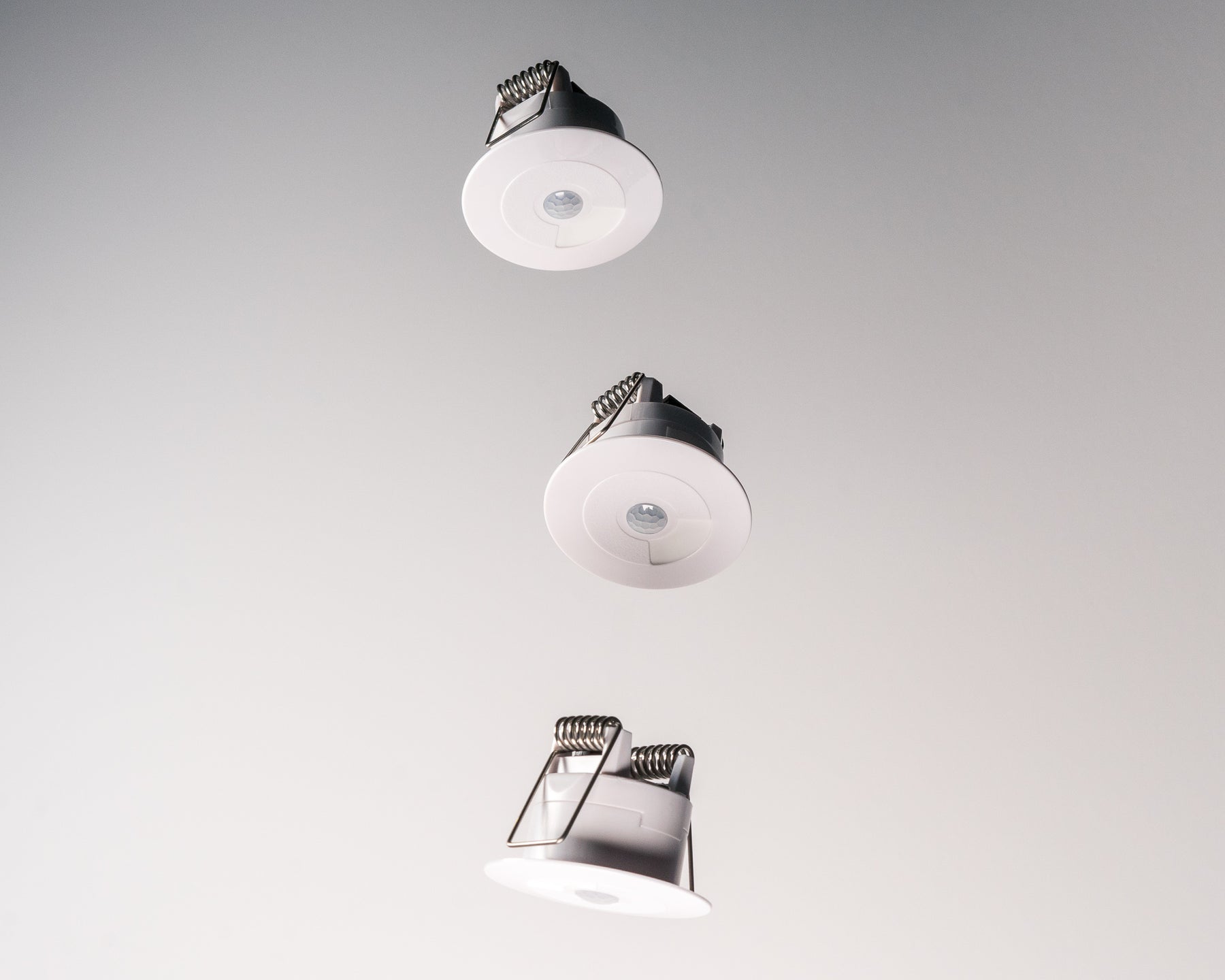
PIR know-how part three - Common Troubleshooting
The third and final blog in our ‘Motion sensor basics’ series we look at some common faults that can be encountered with PIR technology. Let's jump straight into some common reasons motion sensors may perform sub-optimally and how to minimize / eliminate these common pitfalls.
Placement
This is the most important thing to consider to ensure the motion sensors perform as intended. For example, a motion sensor placed in the middle of a small room that is located off a corridor may be triggered by someone walking through the hallway. If the detection area at floor level spills out into the corridor floor, the feet of someone walking down the corridor will trigger the sensor in a room that may well be vacant.

Consider placing sensors very closely above the door of the room. The proximity to the wall can help block the sensor detecting people walking past in the hallway and it means that the beam density is at its highest very close to the door so it will detect entry into the room instantly.
Large rooms may also require more than one sensor to ensure all entry/exit points are sufficiently covered and there are no blind spots in the room that the sensors can’t monitor when the room is in use. You can see more about using multiple motion sensors in one room here.
Pets
We sometimes get asked if our sensors are pet friendly and the simple answer is no. But there is a very good reason for this...
Our sensors are very sensitive sensors designed to pick up on small movements like, for example, an arm or hand moving. Secondly, they are designed for lighting / home automation systems. Our sensors are looking for hot moving objects that emit Infrared. Simply put a cat / dog is a large and hot object and is a similar size to an arm so the sensor cannot determine if it's an arm or a cat / dog moving.
There are alarm sensors on the market that claim to be “pet friendly”. Alarm sensors achieve this by being wall mounted with their beam coming out horizontally. They omit the bottom beams that touch the floor when configured in their pet friendly mode (not possible with discreet ceiling mounted sensors). Whilst in theory this seems like a great way to avoid your furry friend falsey triggering motion sensors, if your cat/dog decides to jump onto a chair or a sofa it will trigger the motion sensor.
But more importantly alarm sensors are designed to be less sensitive so they make for very bad lighting / home automation sensors.

We advise configuring your smart home systems with a ‘pet’ mode where certain rooms where pets are kept during the day are programmed in a suitable way.
Headlights
In certain settings, it is possible for car headlights to directly hit a motion sensor. As some headlights have a high content of Infrared light they can trigger the sensor. If you have a job where this is an issue you can simply reduce the sensitivity of the sensor and that will eliminate the problem. It should be noted that this is very rare but it can happen, we don't suggest adjusting the sensitivity unless this is reported as an issue.

This can be harder to troubleshoot as it may be more noticeable for certain vehicles and may be more noticeable at certain times of the day. Again, considering the motion sensor placement is one way to avoid car headlights falsely triggering your motion sensors. Adjusting the sensitivity is also another way to eliminate the issue.
Vents
HVAC vents can be a particular problem for outdoor motion sensors. If a passive infrared sensor is pointing towards a heating vent location, the sudden increase in heat over a number of the sensors beams, compared to relatively lower outside temperature can cause the sensor to trigger.

This can be noticed more at certain times of year when the building HVAC is used more (autumn/winter) and can often seem like the outside lighting is being triggered completely randomly. Keeping detail records of each false triggering and cross referencing that with HVAC schedules can be a great way of troubleshooting this particular issue.
The very beauty of passive infrared sensors is their simplicity. To get the most out of these essential automation devices make sure you consider correct placement, proper programming and ensuring considerations are made for some of the common troubleshooting tips contained in the blog.
If you have examples of some great motion sensor uses in your smart home we would love to see them - please send to info@faradite.com.

